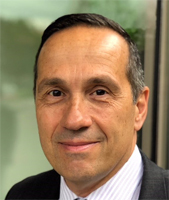A Biopharma's Guide To Staying Virtual Through Commercial

By Louis Garguilo, Chief Editor, Outsourced Pharma

Eight professionals in CMC, working together but virtually, in unchartered orphan-disease and precision-medicine spaces, overseeing a fully outsourced development and manufacturing model, generated a commercial product and filled a pipeline resulting in six clinical trials, two in phase three.
These professionals represent functions such as analytics, chemistry, process, formulation, and drug supply.
“I really don’t know how you can get more virtual than that,” says Rick Panicucci, who oversees the entire operation as SVP CMC for QED Therapeutics, a Bridgebio company.
While abundantly lean, I don’t think Panicucci would object to my observation – this being the final of our three-part editorial – he and team are a breed of CDMO micromanagers:
They do not trust and verify. They verify and verify.
If you are looking for a way to stay lean but also fully leaned into your external partners, read on.
Really Good
For the virtual biopharma model to work, it needs good people.
Check that: “really good people.”
“You only hire really seasoned professionals, and you pay them really well. That's what you do,” explains Panicucci of his ability to outsource all, but still manage CDMOs closely.
“Everyone on my team has considerable experience. They cut their teeth in pharma, but to a person they were also sick of the bureaucracy and BS that goes along with it. They are not only capable and experienced; they are eager to take on responsibility and get the job done efficiently.
“You then just let these professionals do their thing. You give them lots of incentives. Really good things happen.”
This Panicucci recipe applies no matter the reputation or status of the CDMO you select as your partner. Over a long and varied career, Panicucci has in fact worked with the biggest and “best” out there.
“And guess what? The ‘best’ charge top dollar and make the same mistakes. They face the same challenges, as everyone else.
“I’m not being negative; this is drug development, and these things even happen internally to the best of Big Pharma.”
The difference?
 “When issues arise at your own facility, you get to the bottom of them, make decisions, and reload,” says Panicucci. “At a busy CDMO, when a mistake occurs you lose your slot at the facility to someone else.
“When issues arise at your own facility, you get to the bottom of them, make decisions, and reload,” says Panicucci. “At a busy CDMO, when a mistake occurs you lose your slot at the facility to someone else.
Therefore, he says, you need to optimize outsourcing by having “the best, highly involved internal team, so fewer setbacks occur.”
Panicucci points out another factor that helps a virtual biopharma:
The internal “SMEs” that make up his CMC team cut across all outsourced products – that is to say all products at QED. His quality expert oversees quality; his process development expert process activities for all outsourcing.
“That way, internally we are united across our product line,” says Panicucci. “We all know what's going on.”
Lean And Leaning In
Panacucci adds two ingredients to staying lean and leaning into your CDMOs. The first won’t be new to Outsourced Pharma readers, but perhaps adds a dimension:
Managing lean but intently in an all-outsourced environment requires strong relationships. This begins at CDMO selection, when an initial question needs to be raised:
Can this become a close working relationship?
“You need to develop a professional relationship with your partners,” says Paniccuci. “CDMOs need to understand what they're making is more than just a capsule or a tablet or injectable. These are actually giving people hope.
“They are developing drugs for patients that within five years are going to die. They can help extend lives. On a personal level, they need to know why they are doing this work, and that leads to why we selected them in the first place – we think they are the best at it.”
The second ingredient to keep yourself as virtual as possible even through commercial involves a discussion we had in part two, regarding finding that right CDMO.
In short, it’s difficult, but once you find a good partner, how do you do you keep them interested in you as a key customer?
Particularly, as we’ve been discussing, if you are a relatively small organization, and pursuing advanced (novel) therapies and targets, you present the CDMO with certain inherent challenges (again, see part two).
“One way to keep your best CDMO interested, and paying the ultimate attention to your projects, is to pile projects into that one CDMO to the extent possible,” says Panicucci.
Granted, this can be difficult: different projects require different skill sets; you don’t have many programs or projects to outsource; all-eggs-in-one-basket syndrome, etc.
“However,” counters Panicucci, “you certainly raise their interest if instead of being one small customer with a single project, you give them more and more projects.”
Panicucci has executed this strategy to the Nth degree.
Proof of that is in this statistic: Despite all the activity at QED (see parts one and two), he’s narrowed his external network to one CDMO for API, and two for drug product.
These are not large – in fact mostly “specialty” service providers – so even a few more projects or products can make a small client appear bigger – and garner more attention.
“I have been involved with several Bridgebio companies in the past,” says Panicucci. “We ended up spreading the CDMOs out, and they all had their special challenges.”
Instead, he says, “pick your partners wisely, and if they work out, keep feeding them.”
Staying virtual – or at least lean – takes a well thought-out strategy, an instituted discipline, strong CDMO relationships and even stronger CDMO management and oversight.
And really good people to start with.
---------------
Also read:
